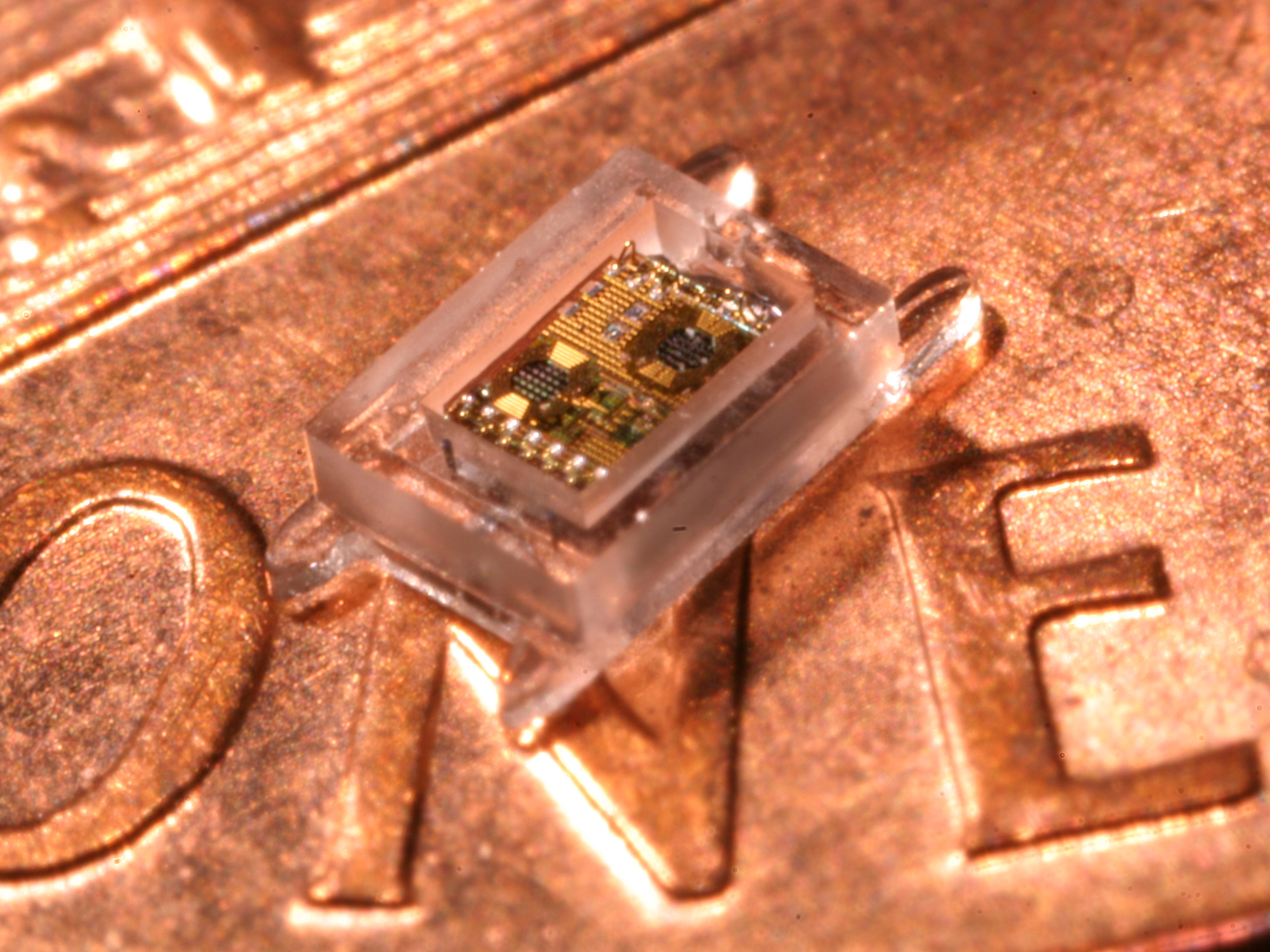Researchers Cram Computer on Pen Tip
Researchers have created a millimeter-scale computing system with wireless network connectivity.
Wednesday researchers at the University of Michigan revealed that they have constructed the first prototype for a millimeter-scale computing system. Called Phoenix, the SoC is targeted toward the medical field and will be first used as a implantable eye pressure monitor for glaucoma patients.
During the International Solid-State Circuits Conference (ISSCC) in San Francisco, the three researchers behind Phoenix said that the overall package measures just one cubic millimeter, and contains an ultra low-power microprocessor, a pressure sensor, memory, a thin-film battery and a solar cell. Phoenix also contains a wireless radio with an antenna that can transmit data to an external reader device held up near the eye.
"This is the first true millimeter-scale complete computing system," said professor Dennis Sylvester from the university's Department of Electrical Engineering and Computer Science. "Our work is unique in the sense that we're thinking about complete systems in which all the components are low-power and fit on the chip. We can collect data, store it and transmit it. The applications for systems of this size are endless."
Sylvester said that the Phoenix SoC--currently in its 3rd generation--can store up to a week's worth of information. It also achieves ultra-low power consumption thanks to a unique power gating architecture and an extreme sleep mode. The latest model wakes every 15 minutes to take measurements within the eye, consuming an average 5.3 nanowatts. The battery recharges by consuming 10 hours of indoor light or 1.5 hours of direct sunlight.
As for the chip's micro radio, it features an on-chip antenna that doesn't require a bulky external crystal for two-way communication. Instead, it can automatically tune in to any wireless frequency that's available so that it can download stored information to an external reader. "This is the first integrated antenna that also serves as its own reference," said assistant professor David Wentzloff. "The radio on our chip doesn't need external tuning. Once you deploy a network of these, they'll automatically align at the same frequency."
The professors point to Bell's Law which says there is a new class of smaller, cheaper computers nearly each decade. The Phoenix SoS could mark the start of the next wave, powering millimeter-scale systems and networks. "Because they're so small, you could manufacture hundreds of thousands on one wafer," they said. "There could be 10s to 100s of them per person and it's this per capita increase that fuels the semiconductor industry's growth."
To learn more about Phoenix, head here.
Get Tom's Hardware's best news and in-depth reviews, straight to your inbox.

Kevin Parrish has over a decade of experience as a writer, editor, and product tester. His work focused on computer hardware, networking equipment, smartphones, tablets, gaming consoles, and other internet-connected devices. His work has appeared in Tom's Hardware, Tom's Guide, Maximum PC, Digital Trends, Android Authority, How-To Geek, Lifewire, and others.
-
JasonAkkerman All it needs is a built in projector to display images on the inside of your eye.Reply
Now that's augmented reality. -
robochump malmentalnext up flying cars..Reply
Hell naw!!! Idiots can barely drive on the ground as is. Well then again there are many places that should thin out the herd so to speak...hah! -
JOSHSKORN Can it play Crysis? LOL sorry, had to.Reply
Seriously, could it handle Hangman or Solitaire? What CAN it do? -
Next you will be swallowing these in pill form and your toilet will report back the state of your digestive system!Reply
-
dalauder Yay Nanobots! Eventually they'll be able to repair Michael Jordan's joints with nanobots in time for his scheduled 3rd NBA comeback in 2029. I forget what source predicted his comeback, but it seemed reliable when I read it.Reply -
JOSHSKORN 02/25/2011 12:28 PMReply
Can it play Crysis? LOL sorry, had to.
Seriously, could it handle Hangman or Solitaire? What CAN it do?
DID YOU EVEN READ THE ARTICLE YOU DUMBASS INBRED AMERICAN HICK!?
